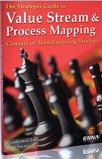
|
Consultants in Lean Manufacturing & Manufacturing Strategy (Our Online Store is back with new convenience and a new look!) |
 |
|
 |
|
The free newsletter of Lean Manufacturing Strategy
 Books & Videos
The Strategos Guide To Value Stream and Process Mapping goes far beyond symbols and arrows. In over 163 pages it tells the reader not only how to do it but what to do with it. More info... Strategos Guide to Value Stream & Process Mapping Also... |
| ||||||
|
|
|
■ ■ ■ ■ ■ ■ ■ |
|
Contact Webmaster |
Strategos-International: North America - Europe - Australia |
 |
SEP 2007 ©_Permissions